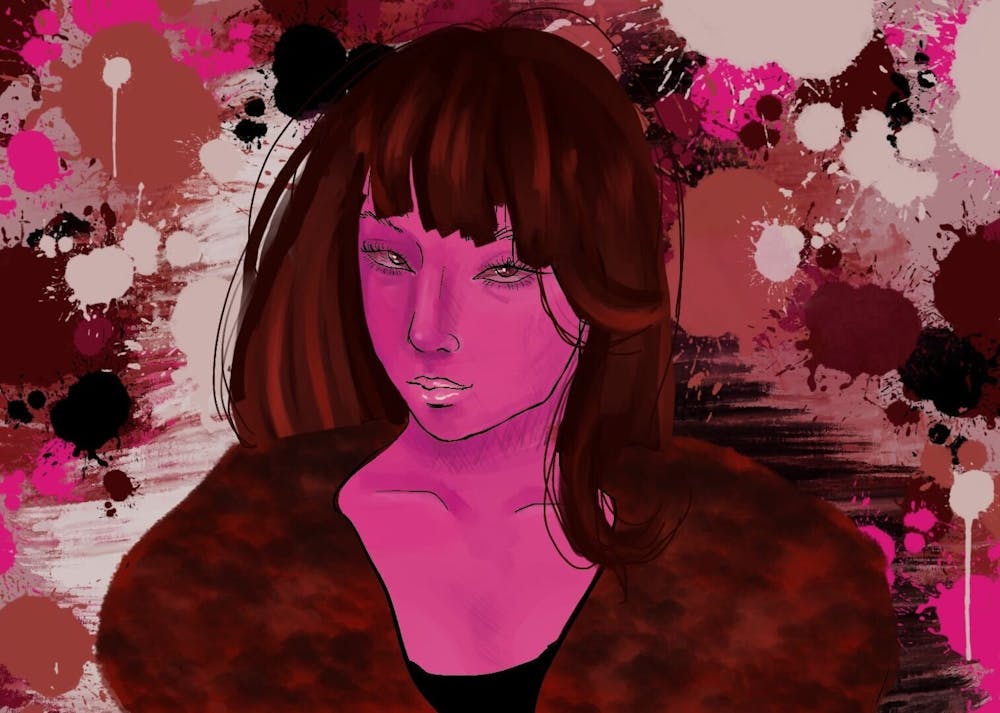In order to make a perfect tint of pink, in color theory, an artist must mix a dollop of white into red. The white is meant to lighten and purify the darker crimson color until it produces the eerily bright color of pink.
However, for many women, pink is more than just a color we wear on Wednesdays or the Victoria's Secret brand color.
Advertising angled toward women is so often pink: the tax on menstrual hygiene products is named "the pink tax," marketing and advertising reels often feature young girls with shades of pink and purple, their clothing is designed with pink sparkles, ruffles and gems — oh my! Balloons with hot pink words announce, "It's a girl!"
Everything about being a girl in our adolescent years is drenched in this pervasive color. The harsh reality hits before we're even born, before we have a chance to figure out who we are, we have already been designated the pink gender.
I have a running theory that for every dark moment women experience in a society defined by patriarchal rules and misogynistic values, our assigned shade of pale pink begins to darken ever so slightly.
Trickles of scarlet paint drip down portraits of pink any time our subconscious alert system notifies us of danger lurking around every club, gym, bar, school, sidewalk, mall and dark alleyway. It's the warning bell ringing in our ears that never dims or falters because being feminine-presenting comes with being in continuous danger.
The first time I felt my shade grow darker was the first time I ever flushed under the uncomfortable gaze of an older man in public. It dimmed every time I was required to help cook or clean while the men in my family got to sit, responsibility free, in front of the TV. The first time a grown man attempted to follow me home from work at night felt as though someone had struck a paintbrush, wet with red paint, across my hot pink canvas.
An image that encapsulates this concept is Jackie Kennedy's pink pencil skirt and white stockings, splattered with her husband's blood as she showed face and waved for the camera following his assassination. I remember seeing her photo in black and white, standing vigilant at Vice President Lyndon B. Johnson's side as he was sworn in as president, her expression void of any emotion.
Even in that moment, on what must've been the worst day of Jackie's life, that blood-stained pencil skirt and matching blazer represented more than fashion, couture, or feminine values. It represented what she'd lost, what the world had taken from her and, synonymously, what was still expected of her: professionalism, composure and service with a smile.
I used to vehemently detest the color pink after so many years of my youth being told that all the color represented was girliness. In the eyes of society, girliness was viewed as being frilly, fragile and feeble. Like a flushed rose-colored chain collar wrapped around my neck, my femininity tethered me to this color whether I liked it or not.
Now that I'm older, I've come to realize that what I hated was never the color pink itself. What I hated was being perceived as weak; lesser than. So, alternatively, I embraced pink's darker gradient: raging red.
If I had to summarize the female experience, I'd say that it sometimes feels like being put into a small, petite, pink box that outlines what we can and can't do. We're told to decorate the box, make it look pretty, and make sure it's clean and pristine as if it's a home, not a prison.
It's rare that women are allowed to tear out of those pretty boxes and scream until their throats are raw. It's rare that we're allowed to express blinding, searing red rage. It's an emotion that should be cherished rather than shunned. After trying — and failing — to understand why we as a civilization are so tethered to these ideals, I've come to the conclusion that all shades of female emotion — light or dark — are actually quite beautiful.
Being a woman is beautiful.
And despite the many universally negative experiences we share as women, we aren't defined by our suffering at the hands of a male-centric world. What defines us is how well we wear our jaded anger; embracing our unique gradients of pink, no matter the shade.
Edited by Claire van Doren, Jasmine Kabiri, Piper Hansen, Greta Forslund and Caera Learmonth.
Reach the reporter at amvald11@asu.edu and follow @anxieteandbread on Twitter.
Like The State Press on Facebook and follow @statepress on Twitter.

Analisa Valdez is a reporter with the Echo, focusing on covering the arts and entertainment world. Analisa has been apart of the State Press for two and a half years and is in her third year at the Walter Cronkite School of Journalism and Mass Communication.




